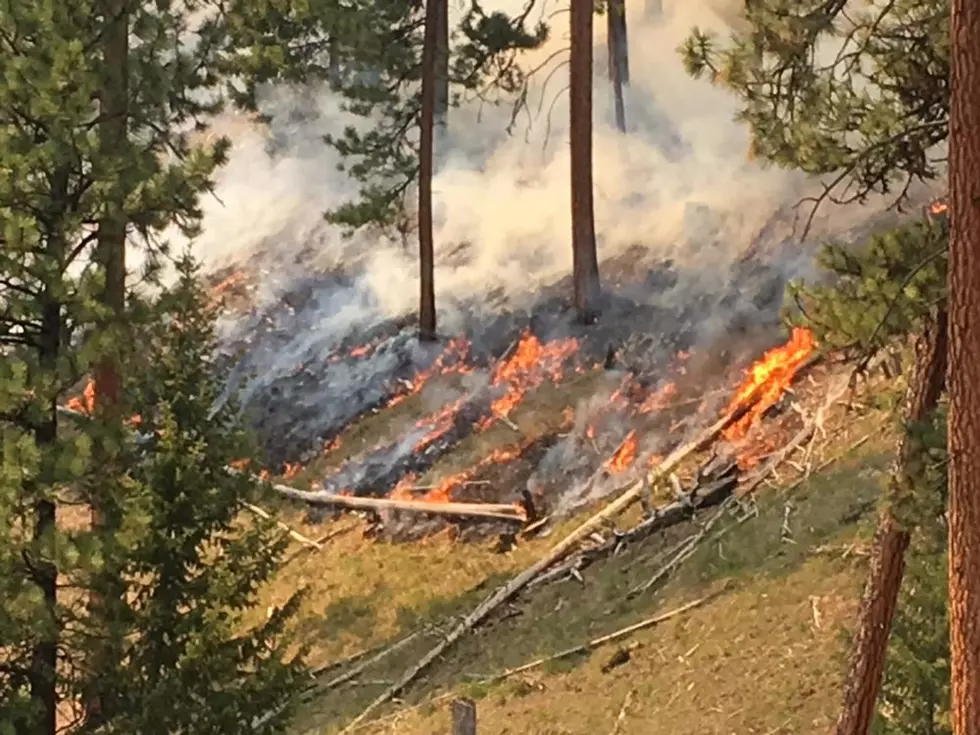
Lolo Forest finalizes Petty Creek logging project
Laura Lundquist
(Missoula Current) The Lolo National Forest is moving forward with logging and prescribed burns in the Petty Creek drainage, although public comment prompted some parts of the project to be reduced.
On Wednesday, Lolo National Forest Supervisor Carolyn Upton issued her final decision on the Sawmill-Petty Project, more than three years after scoping began and after considering all public input on the environmental assessment. Her decision authorizes various treatments, including commercial timber harvest, thinning, slashing, and prescribed burning, within the 16,879-acre project area south of Interstate 90 about 30 miles west of Missoula.
During public comment, some people were concerned that the amount of proposed road building was too much because roads affect water quality, wildlife survival and wildlife habitat as well as exposing public land to more wear-and-tear.
Upton’s decision removes the construction of 3.6 miles of road, although the project still adds 28 miles of new road and 143 miles of road that was previously decommissioned, undetermined or were logging roads on land the Forest Service recently acquired.
Public comment also included concerns that the amount of logging was too much, also potentially affecting water, fish, and wildlife, although others wanted more logging. Some also objected to logging and opening roads in the two inventoried roadless areas in the project area: the Garden Point and Burdette.
So Upton eliminated the commercial timber logging in the Garden Point Roadless Area, partly because it’s a roadless area and partly because of changes in Canada lynx guidance. The Environmental Assessment for the project was issued in September 2020, about six months before the Lolo Forest expanded the boundaries of its lynx analysis units to include more habitat. Two of those units are expanded into the roadless area so Upton factored that in.
On Aug. 24, the U.S. Fish and Wildlife Service provided a biological opinion on the project, which found the work may affect but is not likely to adversely affect lynx and grizzly bear. However, the Service ruled the project may affect and is likely to adversely affect bull trout and its habitat. But after consultation, the Service said the project ultimately wouldn’t jeopardize the continued existence of bull trout.
Even with the loss of the roadless areas, the project still contains more than 5,300 acres of commercial logging, including 1,342 acres of clearcut, which the Forest Service refers to as “regeneration harvest.” While the largest clearcut is 125 acres and the smallest is 3 acres, most of the 28 clearcut units average about 50 acres. The National Forest Management Act of 1976 directed the Forest Service to limit the acres opened by clearcuts. In the national forests of Montana and northern Idaho, clearcut and related logging is limited to 40 acres per logging unit, although forest managers can request exceptions. The total harvest volume is estimated at almost 750,000 cubic feet or more than 89 million board-feet.
Upton is amending the Lolo Forest Plan for two aspects of the project, the main one being that the plan requires the Forest Service to retain at least 50% forest cover in each project management unit for big-game cover and forage. The clearcuts would violate that.
Upton also removed some prescribed burning from the two roadless areas, although burning will still be conducted on 250 acres in the Garden Point Roadless Area.
“My staff and I considered removing the portions located in (the inventoried roadless area) but found it would be infeasible to safely and effectively implement the remaining 1,411 acres outside the inventoried roadless area without the ability to allow fire to back down to the existing roads and other natural features within the roadless area,” Upton wrote.
Several groups objected to Upton’s initial decision issued in 2020, including WildEarth Guardians, the Center for Biological Diversity and the Flathead, Lolo, Bitterroot Citizens Task Force.
On Wednesday, a few reacted to Upton’s final decision with some praise but still some concern.
"We appreciate that the Forest Service heeded some of our concerns, including dropping commercial logging operations within the Garden Point Roadless Area," said Adam Rissien, ReWilding Manager with WildEarth Guardians. "But the project remains fundamentally flawed as it will vastly increase the road system, hindering grizzly bear recovery in the region, and effectively clearcut more than 1,300 acres under the guise of reducing wildfire risks.”
Rissien emphasized that the most effective place to reduce wildfire risk to a home is within the first 100 feet of the structure, the area known as defensible space. That’s where vegetation should be mowed and trees and shrubs should be minimal. Trees outside the 100-foot radius should be pruned and thinned.
“If the purpose of this project is to reduce wildfire risk to homes and communities, how far away do you have to go? In our minds, that’s the first 100 feet around a home, not a half-mile, three miles away into the backcountry,” Rissien said.
Read the full decision here.
Contact reporter Laura Lundquist at lundquist@missoulacurrent.com.
